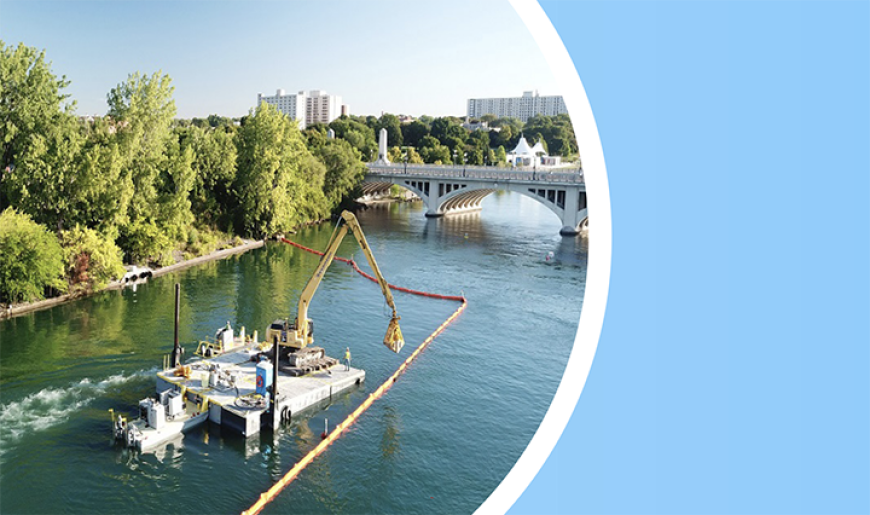The 2023 State of the Strait Report calls for “urgency” in cleaning up toxic sediment on the bottom of the Detroit River. Remediation is needed on the Detroit side but not on the Canadian side, according to the report.
-
April 14, 2023
U-M graduate students showcase sustainability ideas for Detroit small businesses
The students met with Detroit entrepreneurs and energy experts to understand the most pressing energy needs in the city. Those meetings helped them create how-to guides on how Detroit business owners can make their business “greener” and obtain funding through the Inflation Reduction Act to make changes.
-
April 10, 2023
Michigan sustainability case: a tale of two (polluted) cities
“Working on this case honestly made me realize how much air quality is affecting Detroit residents—particularly minority residents such as Latinxs and African-Americans that live within the southwest side of the city,” wrote Dolores Perales. “So, in researching this case, it was interesting to see what is going on, what can be done, and what are the potential things that we as residents and allies can do to mitigate these issues, not only within Detroit, but as in Cecilia’s case, Southwest Los Angeles.”
-
September 23, 2019
U-M architecture professor Doug Kelbaugh brings passion to sustainable design
“I think it’s also the first book to overtly state that cities are our last best chance in the war against climate change. People who live in cities have smaller carbon footprints, and that’s largely due to walkability, transit, and shared dwelling units that share walls and infrastructure.”
-
July 25, 2019
U-M study reveals hot spots of environmental injustice across Michigan
A new study by a University of Michigan student team has identified “hot spots” of environmental injustice across the state. U.S. census tracts in Detroit, Grand Rapids, Flint, Saginaw, Lansing and Kalamazoo are among the hot spots identified in the study, which was released today.
-
May 7, 2019
U-M report details phosphorus sources—both urban and agricultural—in Detroit River watershed
A new University of Michigan report provides the most detailed characterization to date of the phosphorus sources—and their relative contributions—in the complex Detroit River watershed, which is heavily urbanized on the U.S. side of the border and mainly agricultural on the Canadian side.
-
April 19, 2019
The fight against Detroit’s controversial waste incinerator hits home for Ahmina Maxey
Ahmina Maxey was shocked when the incinerator closed in late March. “It was so abrupt,” she said. “The incinerator (owner) has the best poker face I’ve ever seen because… they were pretending it was going to be open for 20 more years.”
-
September 26, 2018
This urban farm is on path to sustainability
Akoaki, a design studio in Detroit, has been working with the Oakland Avenue Urban Farm for nearly four years to develop a vision and “guiding plan” to make it self-sufficient and sustainable.
-
May 17, 2017
Reducing phosphorus entering the Detroit River; real-time, autonomous stormwater control
In 2015, U-M researchers at the Graham Sustainability Institute were awarded a $3 million grant from the Erb Family Foundation to determine the relative contributions of various phosphorus sources, both urban and agricultural, in the Detroit River watershed.


